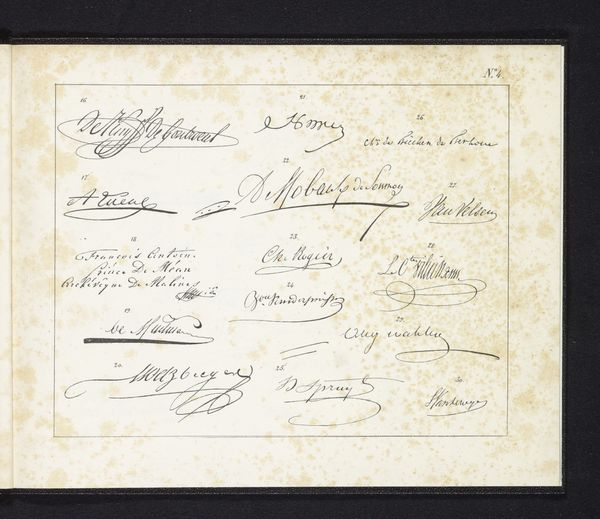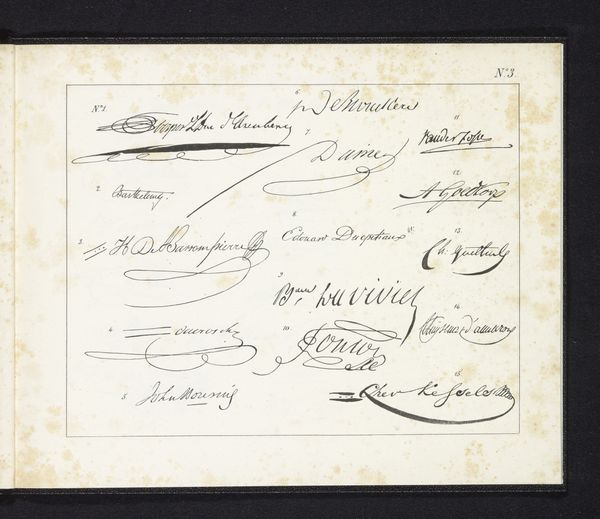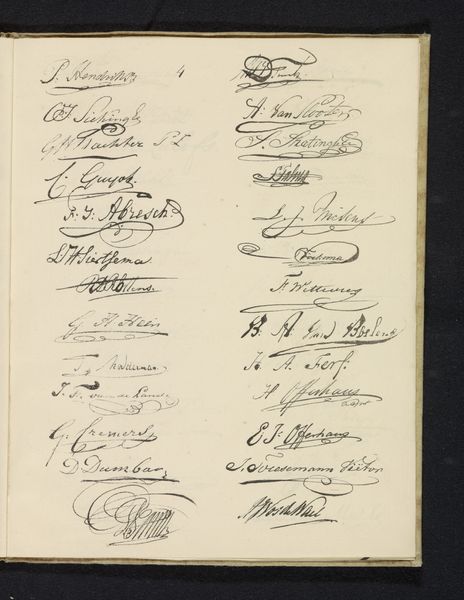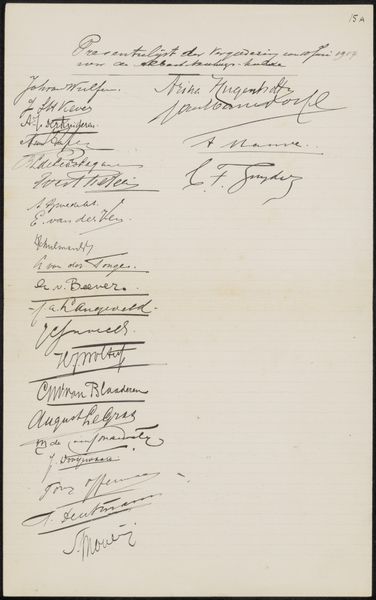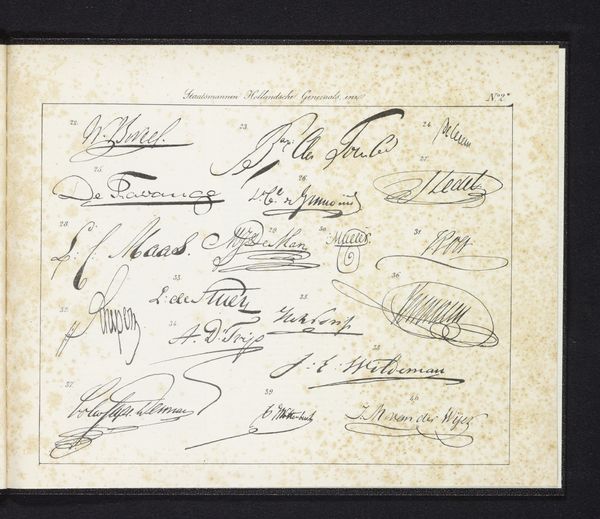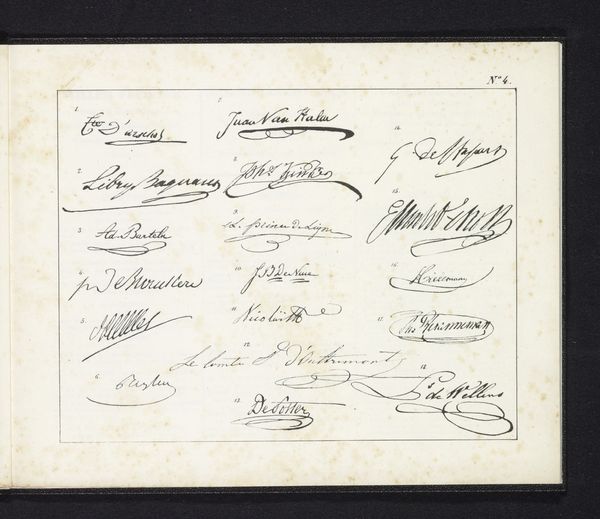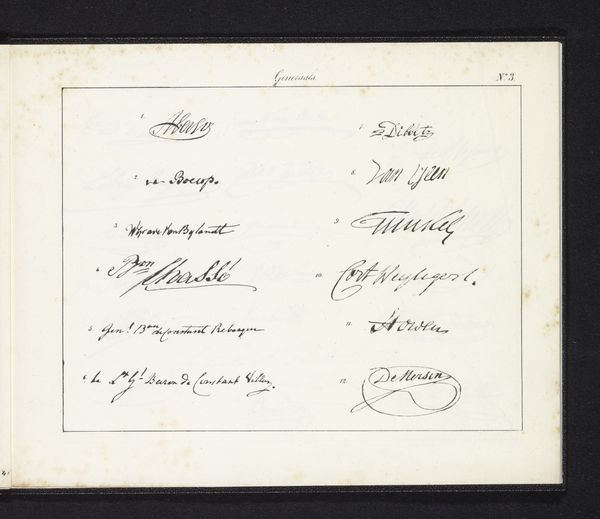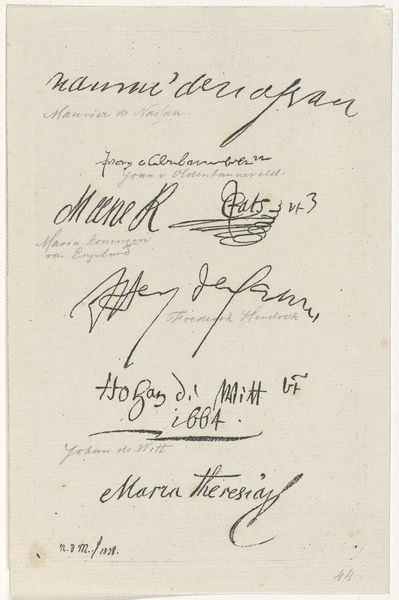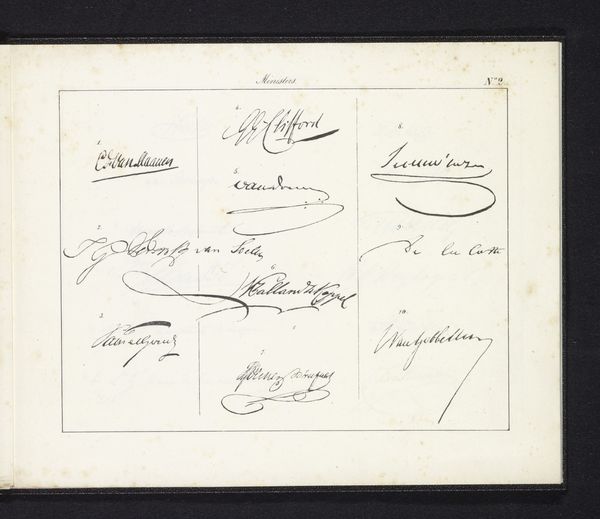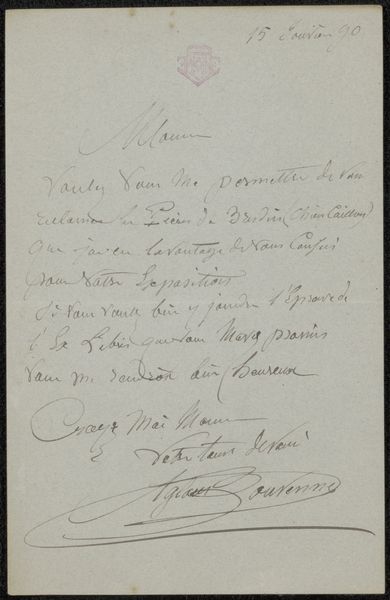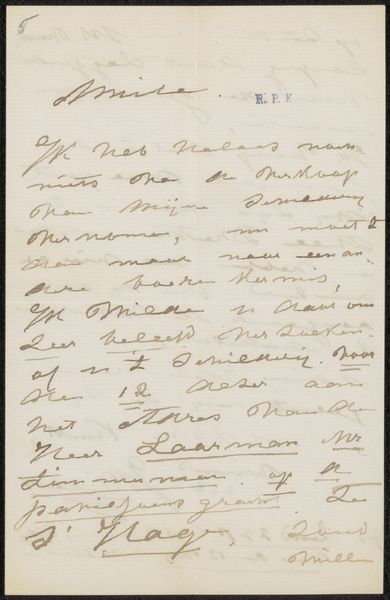
Blad met handtekeningen van de leden van de Vergadering der Aanzienlijken, 1814 1814
0:00
0:00
drawing, paper, ink, pen
#
portrait
#
drawing
#
hand-lettering
#
old engraving style
#
hand drawn type
#
hand lettering
#
paper
#
personal sketchbook
#
ink
#
ink drawing experimentation
#
pen-ink sketch
#
pen work
#
sketchbook drawing
#
pen
#
history-painting
#
sketchbook art
#
calligraphy
Dimensions: height 248 mm, width 600 mm
Copyright: Rijks Museum: Open Domain
Curator: This sheet, bearing signatures from the members of the Assembly of Notables, dates back to 1814 and is attributed to Cornelis van Baarsel. Composed of ink on paper, it showcases a collection of elegant signatures. Editor: My immediate impression is one of authority tempered by individuality. Each signature is unique, a small assertion of self, yet they coalesce to signify a unified body, acting in concert. Curator: Precisely. The calligraphic quality is quite striking. Notice how the varying weights of the ink lines create rhythm and depth across the page, providing a sense of structured yet organic design. One can see clear contrasts, sharp angles against wide flourishes, resulting in dynamism. Editor: But we must consider what the “Assembly of Notables” represented during this historical moment. This group comprised elites, chosen by the sovereign, handpicked individuals from a stratified society who, during a transitional time, are effectively putting their names to a new power structure. It signifies not only agreement, but perhaps, ambition and strategic self-positioning. Curator: I concur, understanding that this image must reflect sociopolitical realities is essential, though I am more attuned to the nuances found solely in its execution. Take, for instance, how these signatures, acting almost like abstract marks, generate complex patterns upon closer view. One detects intentionality when each is carefully crafted using a restricted palette, creating a uniform visual impact while managing differentiation between participants involved. Editor: What strikes me most about it is not the artistry of these lines so much as what that uniformity ultimately serves: upholding privilege and status after a period defined by radical change, while these pen strokes represent both adherence to form alongside silent power. Curator: A compelling perspective. The power structures represented are inescapable, while for me it is the way such a common act - signing one's name - may achieve such heights of elegant abstraction. Editor: Exactly, by looking both near and far in ways which expose inequalities that extend towards today provides relevant means that render artwork valuable today.
Comments
No comments
Be the first to comment and join the conversation on the ultimate creative platform.
